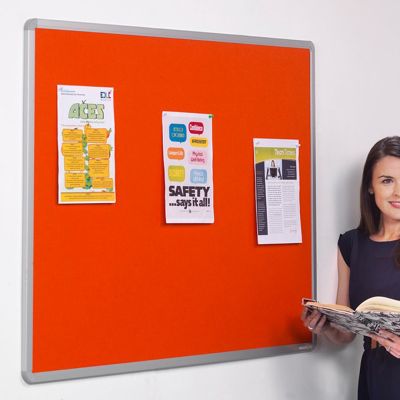Using Display Boards to Share Your Message
In today's fast-paced world, capturing people's attention and effectively conveying your message can be a challenging task. Whether you're a student presenting a school project, an entrepreneur showcasing your business, or a teacher explaining a complex concept, visual storytelling through display boards can be a game-changer. Display boards offer a powerful medium to engage and inform your audience, leaving a lasting impression. In this blog post, we will explore the incredible power of visual storytelling and provide you with tips on how to create compelling display boards to effectively share your message.
Here's how you can share your message
Grabbing Attention
The first step in capturing your audience's attention is to create an eye-catching display board. Use bold and vibrant colors, compelling images, and concise headlines to immediately draw people in. Think about the story you want to tell and use visuals that reinforce your message. Incorporate a focal point or a central image that serves as the anchor for your display. A captivating start will pique curiosity and encourage people to explore further.
Crafting a Narrative
Display boards are an excellent medium for telling a story. Structure your content in a way that flows logically, taking your audience on a journey. Begin with an introduction that sets the context and grabs attention. Then, build up your narrative by using a combination of images, charts, graphs, and text to support your main points. Use clear and concise language to convey your message effectively, keeping in mind the level of understanding of your target audience.
Visualising Data and Information
Complex data and information can be overwhelming when presented in a purely textual format. Display boards offer an opportunity to transform data into visually appealing and easily digestible graphics. Utilize charts, infographics, and diagrams to present statistics, trends, and comparisons. By simplifying complex information, you can make it more accessible and engaging for your audience.
Creating Impactful Visuals
Visuals are a key component of display boards. Choose images and graphics that are relevant to your message and evoke emotions in your audience. High-resolution photographs, illustrations, and icons can help create a visual impact and enhance the storytelling experience. Pay attention to the composition and layout of your visuals to ensure they are aesthetically pleasing and effectively support your narrative.
Balancing Text and Visuals
Finding the right balance between text and visuals is crucial for display boards. Too much text can overwhelm your audience, while too few visuals may not effectively convey your message. Aim for a concise and impactful use of text, focusing on key points and headlines. Use bullet points, subheadings, and captions to break down information into easily scannable sections. Complement the text with relevant visuals that reinforce the message and create a harmonious visual composition.
Incorporating Interactive Elements
Take your display boards to the next level by incorporating interactive elements. This can include QR codes that lead to additional online resources, touch-sensitive panels, or even small samples or prototypes for people to interact with. Interactive elements not only make your display more engaging but also encourage active participation and conversation.


Display boards have the power to transform information into compelling stories that captivate and engage your audience. By leveraging visual storytelling techniques, you can effectively share your message and leave a lasting impact. Remember to focus on grabbing attention, crafting a narrative, visualizing data, creating impactful visuals, balancing text and visuals, and incorporating interactive elements. Embrace the power of visual storytelling through display boards, and watch as your message resonates and inspires others.
If you're part of the NHS or a school you can order via invoice.
Open our webchat to find out more
Contact our sales team to request a quote today. If you looking to order 5+ of the same item, we may be able to offer you a discount.
Open our webchat to request a quote today
Shopping
Contact
-
Display Boards Direct
-
6 Old Hall Barns
-
Thurston Road
-
Pakenham, Suffolk
-
IP31 2NG